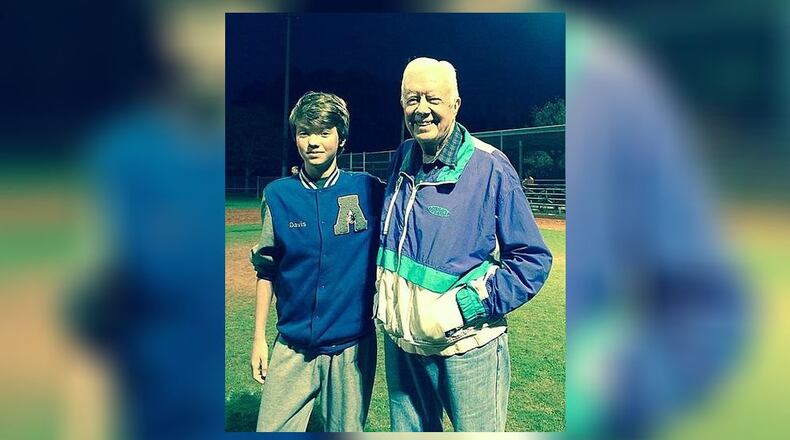We were embarked on a great journey in every sense. The day before, she’d vowed to live with me and love me forever as Sylvia Davis. And now we were heading to Florida, as so many other newlyweds had.
The plane bumped as it backed from the air-side. I smiled at my wife. It wouldn’t be long!
Then the jet stopped. The turbines engines powered down, got quiet. Out the starboard windows, we could see two black SUVs approach, stop.
Moments later, two athletic-looking young men came through the plane, looking at travelers with the sort of hard eyes that told you they’d done this sort of thing before. One spoke into a collar microphone: “OK.”
An older gentleman entered the plane, smiling. He walked slowly toward us, shaking hands and introducing himself. He started at the front, and it was clear he intended to say hello to every person on that plane. I recognized the grin.
“Sylvia,” I said, “here comes Jimmy Carter.”
That little encounter, 16 years ago, underscores what so many of us know: James Earl Carter Jr., perhaps more than any other chief executive in this and the previous century, is the people’s president. Only Harry S. Truman, who liked to take morning walks around Washington during his tenure in the White House, came close to having that common touch.
Did I mention that Carter flew coach?
There’s something that stirs our collective psyche about a president who never loses sight of his origins. We think of young Lincoln, splitting rails before his nation needed him in the Civil War; of an equally youthful Reagan, broadcasting baseball games decades before he called for the end of the Berlin Wall. We like our leaders to remember from whence they came.
And so it is with Carter, whose literal first steps as president took place on Pennsylvania Avenue on Jan. 20, 1977. If you were around then, surely you recall the scene: the nation’s 39th president, walking from the Capitol to the executive mansion.
Credit: CONTRIBUTED JACOB SEUVER
Credit: CONTRIBUTED JACOB SEUVER
A Washington Post writer understood the impact of that sight:
“It took him 40 minutes to cover the mile-and-a-half. As he walked along, with (daughter) Amy prancing, jumping and dancing along at his side, he was shattering recent presidential practice and legend — the idea that a president must be remote and removed from the people.”
Carter — perhaps by default, perhaps by design — has never strayed from that image. The man responsible for the Camp David Accords, establishing peace between Israel and Egypt, swung a hammer for Habitat for Humanity. The former president who was awarded a Nobel Peace Prize attended Sunday school at his hometown church this past weekend.
And this past spring, I was watching my youngest son play baseball at Decatur’s Medlock Park when a breathless kid came running up. He yelled at my firstborn, Reuben, to come quick!
“Jimmy Carter is over there!” the kid yelled, motioning toward the darkness. Carter, the boy said, was watching his great-grandson play baseball on a nearby field. He and Reuben took off toward a set of lights.
Fifteen minutes later, my son came back, grinning. He held up his cell phone, which had a new photo. There he stood, with Plains’ most famous son. ” I shook his hand and everything!” Reuben said.
That made me smile and recall a 2011 interview I had with the former president. The topic: a proposal to establish Palestinian sovereignty, a move Carter supported. I asked the usual serious questions, and he offered the expected insightful answers. Then, as we were winding up our 15-minute talk, I veered off-script.
“Mr. President,” I said, “I doubt you remember it, but you were on the same flight as my wife and I were on during our honeymoon. She and I shook your hand.”
Carter sounded pleased. “Are you still married?” he asked. Most assuredly, I replied.
“Good,” he said. “Stay that way.”
Plain talk from a plain guy.
Keep Reading
The Latest
Featured


